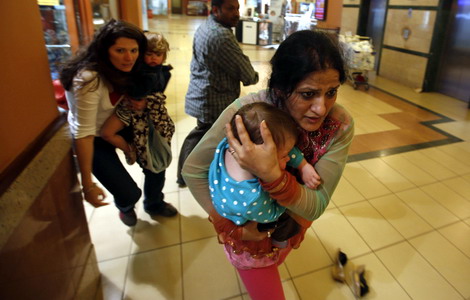

Despite some slowdown, odds of a widespread financial crisis are low
The economic picture in many Asian markets may not be looking all that bright right now but suggestions that we are heading for a repeat of the 1997 Asian financial crisis are grossly exaggerated.
It is true some countries are having problems, says Selena Ling, head of treasury research and strategy with Singapore's OCBC Bank, but she does not think we are heading toward another Asian meltdown.
"I think calling a currency and economic crisis at this juncture is missing the point somewhat, even though risks persist," she says.
She says Asian economies, despite some problems, are on a much firmer economic footing than they were in 1997.
Paul Gruenwald, Standard & Poor's Asia-Pacific chief economist, agrees. He said in a statement: "The road may be rocky in the near term, particularly for the largest deficit countries such as India and Indonesia, but we don't think this is the Asian crisis all over again."
Analysts say much of the market turbulence that has taken place on Asian and emerging markets in recent months is being driven primarily by hints that the US Federal Reserve could start winding back its massive $85 billion in monthly bond purchases as early as this month.
Coupled with this, there have been a number of recent cuts in Asian growth forecasts, including China.
In July, the Asian Development Bank lowered its growth forecasts for developing Asia for 2013 and 2014, citing a softer outlook for China, the world's second-biggest economy.
The Manila-based bank lowered its growth forecast for developing Asia by 0.3 percentage points to 6.3 percent in 2013 and 6.4 percent in 2014.
It cut its growth estimate for China by 0.5 percentage points to 7.7 percent and 7.5 percent this year and the next. Although below 8 percent, this is still a respectable growth number.
"The financial markets appear to be in the midst of pricing in a different path for US monetary policy," said Standard & Poor's Gruenwald.
"During that process, we are likely to see bouts of volatility in emerging Asian economies, along with weaker currencies, lower asset prices and subdued sentiment and growth. But, in our view, this is not a repeat of the 1997 Asian financial crisis.
"The external positions for the emerging Asian economies are much stronger. The central banks are also not defending their exchange rates. In addition, the increase in leverage over the past five years has been moderate in the economies with high external risks," Gruenwald said.
After years of economic boom, many Asian economies are now starting to show signs of stress; most notably India, Indonesia, Malaysia and Thailand, which have all seen widening current account deficits and slowing growth.
In India, the rupee is in free fall, having lost around 30 percent of its value against the US dollar since May, while the stock market has not fared much better. At the same time, the current account deficit stands at around $70 billion — 3.7 percent of GDP.
In Indonesia, the current account deficit continues to widen, pushing the rupiah to its lowest level since 2009.
Thailand, which triggered the Asian financial crisis in 1997, has slipped into recession, while Malaysia is considering whether to introduce a goods and services tax by 2015 to curb its fiscal deficit.
The Thai government recently downgraded the country's expected growth rate for 2013, from 4.2 to 5.2 percent to 3.8 to 4.3 percent. Thailand reported growth of 6.4 percent for 2012.
The country's economy contracted unexpectedly 0.3 percent in the June quarter, following a 1.7 percent fall in the first quarter, indicating a recession.







